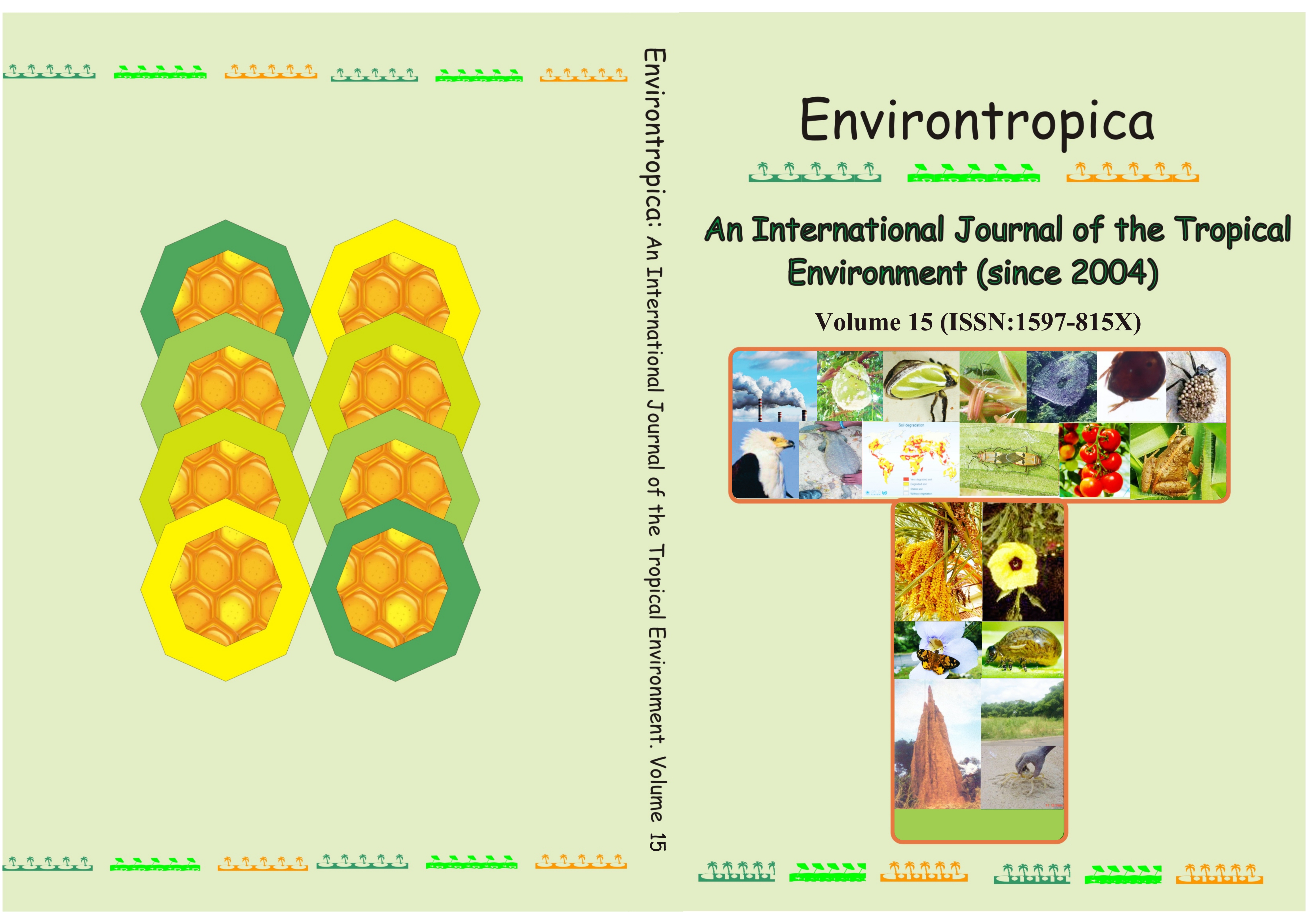
By Adebukola A. ADEDEJI*, Taiwo A. ADESAKIN, Oluseun P. BOLAWA, Harrison C. NKADO, Elias B. OLADIMEJI, Akinwumi O, OGUNMOLA, Abdulmarteen F. SALAHUDEEN
Abstract
A preliminary study, aimed at assessing the effect of abattoir effluent discharge on physico-chemical parameters, plankton community and microbial load of Opa River, was carried out from August 2015 to January 2016 in three stations (A (upstream); B (discharge) and C (downstream). Standard methods of American Public Health Association (APHA) were used to collect and analyse monthly water, plankton and microbial samples. The results reflected the effect of the abattoir effluent on the concentration of nine (9) out of 15 investigated water quality parameters which were highest at the discharge as compared to other stations. The mean concentration of BOD5, chloride and sulphate as well as the mean level of pH, conductivity and alkalinity were also highest at the discharge while dissolved oxygen had the lowest concentration at this effluent receiving station. Moreover, lowest abundance (5880 ind/m3) of planktonic species as well as the highest occurrence of microbial organisms (16 species) was recorded at the discharge station. The order of species richness revealed Bacillariophyceae and Eurotatoria, which are associated with organic pollution, as most diverse phytoplankton and zooplankton respectively in Opa River. All the bacterial (11) and fungal (5) genera reported at the discharge and downstream were of human health concern. Notable microbial species identified at the discharge include Salmonella spp., Rhizopus stolonifer, Escherichia coli, Vibrio spp., Staphylococcus aureus, and Klebsiella pneumonia, all of high health significance.This study confirms the fact that untreated abattoir effluents generated along Opa River poses a serious health problem to people using the waterbody for domestic and other purposes including processing meat for market, hence appropriate measures should be established to ensure the safety of meat being consumed by millions of people.


